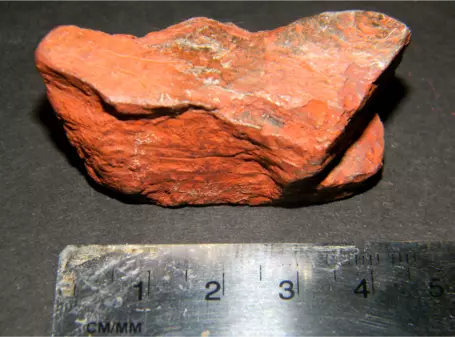Follow the Water with Minerals
In-Class Activity 1_Why Matter and Minerals Matter
Julia Kahmann-Robinson PhD and Marjorie Chan PhD, University of Utah Department of Geology & Geophysics
Purpose
Observe various minerals and identify their connection to water using their chemical formulas and environments of formation.
Preparation
- Assemble mineral hand samples of: hematite, calcite, gypsum, olivine, feldspar, and kaolinite (or other smectite)
- If hand samples are not available use the mineral images provided in the module Image File (PowerPoint 2007 (.pptx) 24.4MB Apr11 13)
Engage
Show images and/or hand samples of a few of the minerals listed in Preparation. Ask students to quickly make a hypothesis as to which minerals indicate aqueous environments.
Explore
- Ask students to indicate whether or not each mineral has an aqueous history of formation/precipitation.
- Once students determine the aqueous history have them connect the mineral to its most probable environment of formation suggested.
- Ask students if they think that these minerals could have multiple environments of formation and why.
Explain
- As students work to identify, with sound reasoning, which minerals indicate an aqueous environment of formation describe the minerals in terms of their properties and general classification (i.e. sulfates, hardness, cleavage etc.).
- Provide students a context of the environments of formation (shield volcano, desert playa, hot springs, pluton, altered volcanic tuff, coastal shelf) listed for students to connect each mineral to its most probable environment of formation. Should you desire, you could provide a PowerPoint slideshow of the environments.
- Encourage students to list their reasoning for their answers.
Elaborate
- Rank the minerals according to what students believe to be their relative abundance on Mars. Highest = most abundant on Mars, Lowest = least abundant on Mars
- Discuss with students their ranking system and their method behind the ranking.
- Share with students a Mars geologic map to give them an idea of the rock types across Mars (see link:http://www.lpi.usra.edu/resources/mars_maps/1083/)
Evaluate
- Evaluate student response as they interpret the images.
- Can students recognize, from the chemical formulas of minerals, which minerals could indicate an aqueous environment? Observe this by their ranking and method of ranking in Elaborate and throughout the Explore sections.


![[creative commons]](/images/creativecommons_16.png)